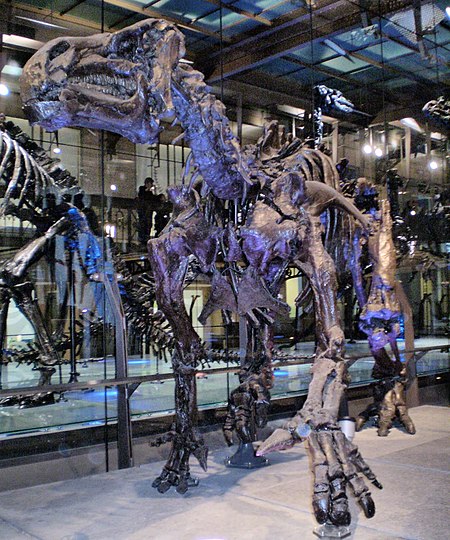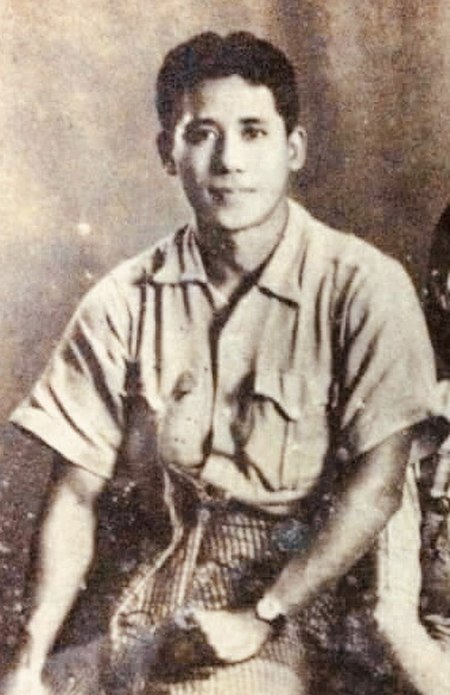Plant cognition
|
Read other articles:

This article needs additional citations for verification. Please help improve this article by adding citations to reliable sources. Unsourced material may be challenged and removed.Find sources: Chester Catholic High School – news · newspapers · books · scholar · JSTOR (April 2014) (Learn how and when to remove this message) Academy in Chester, Cheshire, EnglandThe Catholic High School, ChesterAddressOld Wrexham RoadHandbridgeChester, Cheshire, CH4 7HSEng…

City-state in ancient Greece This article is about the ancient city-state. For modern-day Sparta, see Sparta, Laconia. For other uses, see Sparta (disambiguation). Spartan redirects here. For other uses, see Spartan (disambiguation). For the mythical people associated with Ares, see Spartoi. Lacedaemon redirects here. For the king, see Lacedaemon (mythology). LacedaemonΛακεδαίμων (Ancient Greek)900s–192 BCTerritory of ancient Sparta before 371 BC, with Perioecic cities in blueCa…

Football clubVirginia Beach United FCFull nameVirginia Beach United FCFoundedJanuary 1, 2019; 5 years ago (2019-01-01)StadiumVirginia Beach SportsplexCapacity6,000 (Expandable to 14,000)Head CoachChris MillsLeagueUSL League Two20234th, Chesapeake DivisionPlayoffs: DNQWebsiteClub website Home colours Away colours Virginia Beach United FC are an American soccer club competing in the USL League Two, that started play in 2019. The team is a joint effort of local youth organizations…

Il lemma di Gauss, nella teoria dei polinomi, si riferisce a due affermazioni distinte: il prodotto di due polinomi primitivi è primitivo; se un polinomio è irriducibile in Z [ x ] {\displaystyle \mathbb {Z} [x]} , allora è irriducibile anche in Q [ x ] {\displaystyle \mathbb {Q} [x]} ; cioè un polinomio a coefficienti interi che è irriducibile negli interi è anche irriducibile nei razionali. La seconda affermazione è una diretta conseguenza della prima, ed entrambe le affermazioni posson…

Questa voce sull'argomento cestisti cileni è solo un abbozzo. Contribuisci a migliorarla secondo le convenzioni di Wikipedia. Segui i suggerimenti del progetto di riferimento. Orlando Silva Nazionalità Cile Pallacanestro CarrieraNazionale 1951-1959 CilePalmarès Mondiali Bronzo Cile 1959 Campionati sudamericani Bronzo Uruguay 1953 Il simbolo → indica un trasferimento in prestito. Modifica dati su Wikidata · Manuale Orlando Silva Infante (Santiago del Cile,…

Pour les articles homonymes, voir Huard et Pierre Huard (critique de bande dessinée). Pierre HuardFonctionsRecteurUniversité Félix-Houphouët-Boigny1964-1966Président ou présidenteSociété d'anthropologie de Paris1960Président ou présidenteSociété française d'histoire de la médecine (d)DoyenUniversité de médecine de HanoïBiographieNaissance 16 octobre 1901BastiaDécès 28 avril 1983 (à 81 ans)5e arrondissement de ParisNom de naissance Pierre Alphonse HuardNationalité franç…

此條目可能包含不适用或被曲解的引用资料,部分内容的准确性无法被证實。 (2023年1月5日)请协助校核其中的错误以改善这篇条目。详情请参见条目的讨论页。 各国相关 主題列表 索引 国内生产总值 石油储量 国防预算 武装部队(军事) 官方语言 人口統計 人口密度 生育率 出生率 死亡率 自杀率 谋杀率 失业率 储蓄率 识字率 出口额 进口额 煤产量 发电量 监禁率 死刑 国债 外…

Questa voce sull'argomento gradi militari è solo un abbozzo. Contribuisci a migliorarla secondo le convenzioni di Wikipedia. Segui i suggerimenti del progetto di riferimento. Il finanziere scelto è il secondo grado del ruolo appuntati e finanzieri della Guardia di finanza ed è posto sotto l'appuntato e sopra il finanziere. Accede al grado di finanziere scelto il finanziere che abbia maturato 4 anni e sei mesi di permanenza nel Corpo senza demerito.[1] Il finanziere riveste le qua…

Type of locomotive Namaqualand 0-4-2IST CaledoniaCape Copper Company 0-4-2IST Caledonia, c. 1904Type and originPower typeSteamDesignerDick, Kerr & CompanyBuilderDick, Kerr & CompanyBuild date1904SpecificationsConfiguration: • Whyte0-4-2IST • UICB1n2tDriver2nd coupled axleGauge2 ft 6 in (762 mm) NamaqualandLoco weight9 LT 10 cwt (9,652 kg)Fuel typeOilFirebox: • TypeRound-topBoiler: • …

Iguanodon Periode Kapur Awal 126–122 jtyl PreЄ Є O S D C P T J K Pg N ↓ I. bernissartensis dipajang pada postur kuadrupedal, Royal Belgian Institute of Natural Sciences, Brussels.TaksonomiKerajaanAnimaliaFilumChordataKelasReptiliaOrdoOrnithischiaFamiliIguanodontidaeGenusIguanodon Mantell, 1825 Tata namaSinonim takson Delapparentia turolensis Ruiz-Omeñaca, 2011[1] Other species †I. anglicus Holl, 1829 (nomen dubium) †I. galvensis Verdú et al., 2015[2] lbs Igua…

National Basketball Association rivalry Jazz–Rockets rivalryJazz vs. Rockets game at the EnergySolutions Arena during the 2008 Western Conference First Round Utah Jazz Houston Rockets First meetingOctober 30, 1974Rockets 113, Jazz 100Latest meetingApril 11, 2024Jazz 124, Rockets 121Next meetingTBDStatisticsMeetings total267[1]All-time series140–127 (UTA)Regular season series113–103 (UTA)Postseason results26–23 (HOU)Longest win streakUTA W12Current win streakUTA W1Postseason histo…

2021 studio album by London GrammarCalifornian SoilStudio album by London GrammarReleased16 April 2021 (2021-04-16)Studio RAK (London)[a] Hampstead Way[b] Dean St. (London)[c] Iguana (London)[d] The Circle[e] Rokstone (London)[f] The Gin Factory (London)[g] Assault & Battery (London)[h] Length44:16Label Metal & Dust Ministry of Sound Producer London Grammar Charlie Andrew George FitzGerald Steve Mac Lo…

Football stadium in Lima, Peru For other uses of Estadio Monumental, see Estadio Monumental (disambiguation). Estadio MonumentalAerial viewFull nameEstadio MonumentalLocationAte, Lima, PeruCoordinates12°03′20″S 76°56′09″W / 12.055665°S 76.935883°W / -12.055665; -76.935883OwnerClub Universitario de Deportes[1]Executive suites1,251Capacity80,093Field size105 m × 69 m (344 ft × 226 ft)SurfaceGrassConstructionBroke ground16 …

شعار وزارة الاتصالات وتقنية المعلومات الاتصالات في السعودية تعتبر متقدّمة، فهناك ست شركات اتصالات تقدّم خدماتها المختلفة في مجالات الاتصال والإنترنت.[1] تاريخ الاتصالات في السعودية أجهزة لاسلكية: في عام 1344هـ الموافق 1925م جرت أول مفاوضات مع الشركات في الخارج لشراء أجهزة …

City in Madison County, New York, US Not to be confused with Oneida Community or Oneida County, New York. City in New York, United StatesOneida Oneida: kanaˀalóhaleˀ[1]CityCity of OneidaOneida Main Street in a 1907 postcardOneidaLocation within the state of New YorkCoordinates: 43°5′6″N 75°39′12″W / 43.08500°N 75.65333°W / 43.08500; -75.65333CountryUnited StatesStateNew YorkCountyMadisonChartered1901Government • TypeMayor-Council �…

PangeranGeorge Taw Phaya GyiNama asalတော်ဘုရားကြီးLahir(1922-05-06)6 Mei 1922Rangoon, Burma, British RajMeninggal9 April 1948(1948-04-09) (umur 25)Tatkon, Kotapraja Tatkon, Teritorial Bersatu Naypyidaw, BurmaSebab meninggalDibunuhKebangsaanBurmaAlmamaterUniversitas Rangoon (Sarjana)Dikenal atasMantan Pewaris Takhta BurmaSuami/istriKhin Kyi (m. 1945)AnakSoe Win Myo NaingOrang tuaKo Ko Naing Myat Phaya GalayKerabat Thibaw (kak…

Austrian film actress of the silent era Marietta MillnerMillner (right) alongside Thomas Meighan in The City Gone Wild (1927)Born(1894-12-08)8 December 1894Linz, Austro-Hungarian EmpireDied26 June 1929(1929-06-26) (aged 34)Baden bei Wien, AustriaOther namesMaria Anna Paula BieberhöferOccupationActressYears active1926-1929 (film) Marietta Millner (1894 – 26 June 1929) was an Austrian film actress of the silent era.[1] Personal life Millner married a businessman from Klag…

1807 Battle during the War of the Fourth Coalition This article's lead section may be too short to adequately summarize the key points. Please consider expanding the lead to provide an accessible overview of all important aspects of the article. (January 2024) Battle of HeilsbergPart of the War of the Fourth CoalitionEmperor Napoleon I on the battlefield of Heilsberg, on 11 June 1807 by Joseph Nicolas Jouy, 1837Date10 June 1807LocationHeilsberg, East Prussia (now Lidzbark Warmiński, Poland)54°…

Set of development software developed by Microsoft This article has multiple issues. Please help improve it or discuss these issues on the talk page. (Learn how and when to remove these template messages) This article needs additional citations for verification. Please help improve this article by adding citations to reliable sources in this article. Unsourced material may be challenged and removed.Find sources: Microsoft Expression Studio – news · newspapers · b…

Карта земель Азовского козачьего войска с показанием части Мариупольского округа, составленная в 1839 году Наказным Атаманом Азовского козачьего войска полковником О. М. Гладким Азовское казачье войско — (в отличие от существовавшего с 1696 года по 1775 год Азо…